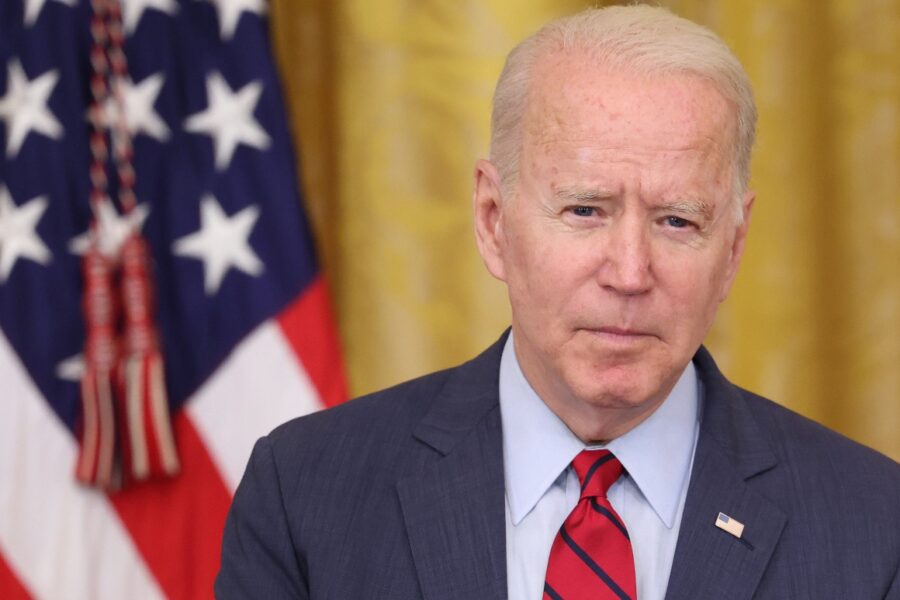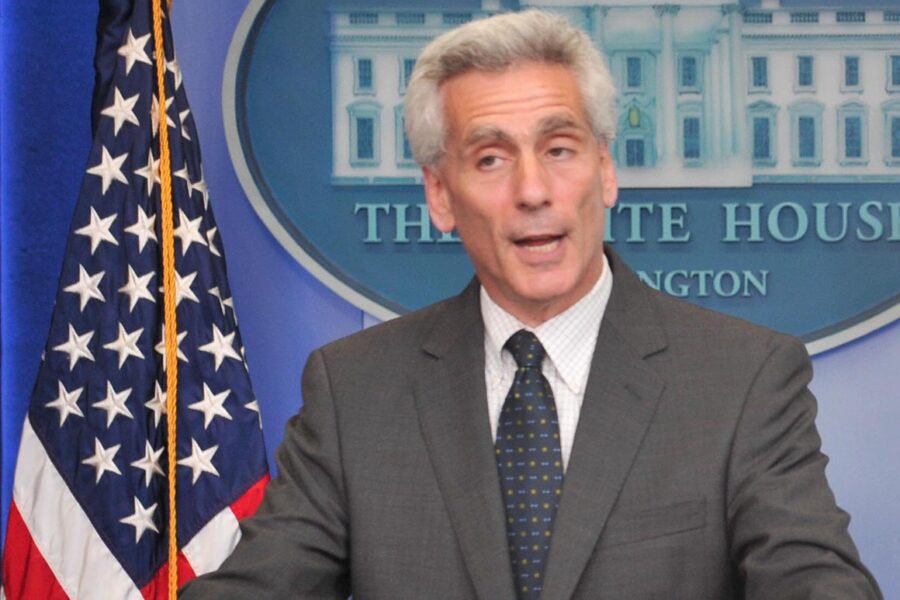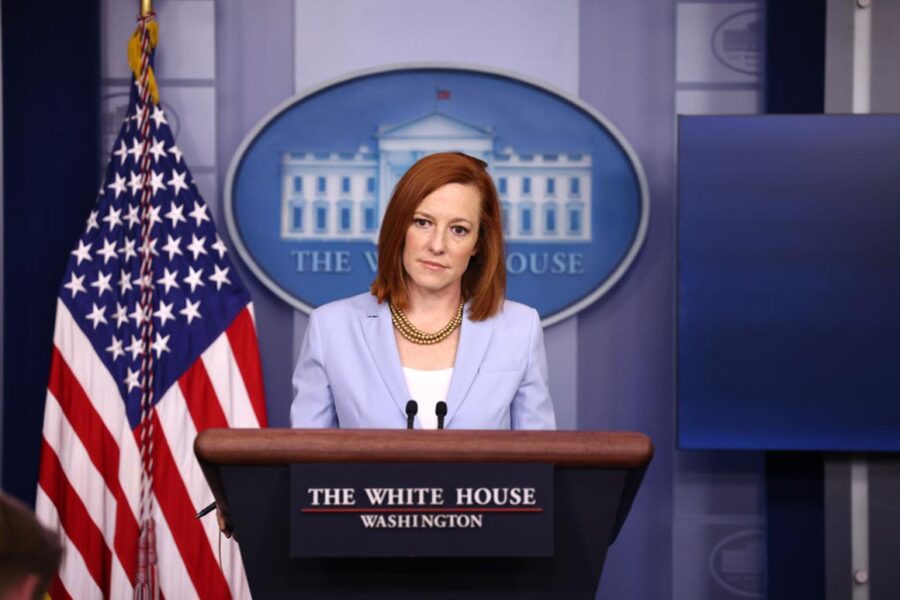Inflation summer vs. recovery summer: Biden fights to win the narrative

President Joe Biden faces a daunting task over the summer months: convincing Americans struggling to return to a normal life that rising prices on everything from gasoline and food to airline tickets won’t last.
Republicans — seeing a potential repeat of President Barack Obama’s “Recovery Summer” of 2010 when the economy suddenly backslid after emerging from the Great Recession — have used the price spikes to attack the administration’s big-spending plans and response to the pandemic.
That will put pressure on the White House to go all out in the coming months to convince the American people that despite recent setbacks, including lower-than-expected job gains, the economy is on the right path.
Employment growth may be disappointing to some economists, but Biden officials note that wages are rising. Inflation is hitting consumers, but the Federal Reserve considers it transitory. Homeowners may have to wait months for furniture and appliance deliveries, but that’s because the economy is roaring back faster than predicted. And the administration wants to pour trillions more into the economy, with child-care options, free pre-school and other benefits for workers, especially at the lower end of the income scale.
“From the start, we were clear that inflation would firm as the rescue plan got shots in arms and checks in pockets,” said Jared Bernstein, a member of Biden’s Council of Economic Advisers. “The reason these price pressures are upon us is getting lost: There’s an extremely robust recovery afoot, with strong job creation and wage gains for workers who finally have some bargaining clout.”

The extent to which Biden and the White House can pull off this argument — and actually deliver on their promises — will determine whether a recent dip in the president’s approval rating proves to be temporary or portends a slide that could put the Democrats in serious jeopardy heading in the 2022 midterms.
A Monmouth University poll this month showed Biden’s approval rating slipping to 48 percent from 54 percent in April, with 47 percent of Americans “very concerned” about rising prices. According to aggregate poll numbers from FiveThirtyEight, 52.7 percent of voters approve of the job Biden is doing, down from his 55 percent high early this year.
Economists suggest that while the declines are small, they reflect growing anxiety about higher prices and the possible impact of Biden’s big spending plans.
“The issue right now is really about people’s psyches and how they are feeling about this and how persistent all these higher prices will be,” said Rubeela Farooqi, chief U.S. economist at research firm High Frequency Economics. “For the White House it’s a tricky situation and all they can do is stick to their messaging that this is all temporary and will ease up. But if it doesn’t, the Federal Reserve will have to act and that will certainly slow down the economy.”
On Friday, the Commerce Department reported that the “core personal consumption expenditures” price index — a key inflation indicator that the Fed uses to set policy — rose 3.4 percent in May from the same time last year, the biggest increase since 1992. Overall prices are up 3.9 percent from last year, the biggest gain since 2008 when oil prices soared. Personal income declined 2 percent in May but that largely resulted from an inflated April number when stimulus checks went out.
The inflation figures were not above Wall Street expectations and partly reflected the depressed state of the economy last year. But they are nonetheless being felt by consumers who face higher prices on cars, ride-sharing services, hotels, food, gas and other items even as the pace of jobs returning from the pandemic has slowed down. And employers are struggling to find the workers they need to serve increasing consumer demand, a trend that worries White House officials.
The hope inside the West Wing is that by the end of the summer, when enhanced federal unemployment benefits are scheduled to expire, workers currently sitting on the sidelines will pour back into the labor market, easing some of the pressure on employers to offer outsized bonuses and other perks just to get people back to work.
It’s a tricky calculus since the administration wants to see higher wages for workers but not the kind that can send inflation spiraling and force the Fed to bump up interest rates faster than it wants to and potentially choke off growth.
Biden himself surprised some economists on Thursday when he said the problem with the labor shortage was a lack of better pay.
“It was legitimate questions you were asking me,” he said. “‘Well, you know, guess what? Employers can’t find workers.’ I said, ‘Yeah. Pay them more.’ This is an employee’s bargaining chip now what’s happening. [Companies are] going to have to compete and start paying hardworking people a decent wage.”
That sentiment reflects the thinking of progressives in the Democratic Party. But there is significant concern among economists that overly generous jobless benefits are at least part of what is keeping workers away from the labor force and that higher wages — while generally welcome — can stoke inflation.
And Republicans continue to seize on the inflation numbers to suggest that Biden’s spending plans and the easy money policies from the Fed risk even higher prices that could slam consumers and undercut growth that is expected to be robust both this year and next.
Rep. Kevin Brady of Texas, the top Republican on the tax-writing House Ways and Means Committee, tweeted on Friday that Biden was “blowing it” on the economy: “549,000 fewer jobs in 2021 than last 5 mos ’20; Prices rising twice as fast as paychecks … Inflation highest in 13 years.”
Republicans are also continuing to hammer away at higher gas prices, a sensitive spot for Democrats especially as Americans hit the road this summer for vacations and family visits long-postponed by the pandemic.
Rep. Jim Jordan of Ohio, the ranking Republican on the House Judiciary Committee, tweeted this week: “Average gas price: June 2020: $2.21 June 2021: $3.07 President Biden’s economy!”
That prompted a sharp retort from White House Press Secretary Jen Psaki, indicating the administration is sensitive to the impact that higher fuel prices can have on overall consumer sentiment.

“You forgot to mention that gas prices are the same now as they were in June 2018. Or that this time last year unemployment was 11.1% — today it’s 5.8%,” Psaki tweeted back at Jordan.
Senior White House economic officials argue that while they are keeping a sharp eye on prices — and are a bit worried about job market trends — they do not believe inflation will continue to spike upward. Instead, they say they will step up their efforts to address supply chain issues while making the case that the economy is coming back and any pain from price hikes this summer will prove fleeting.
But that is at least as much a hope as it is a certainty. The U.S. is clearly not on the cusp of 1970s-style runaway inflation. But it is teetering close to a tipping point that could be politically perilous for the White House and congressional Democrats.
“A lot of this stuff isn’t fully biting yet,” said Richard Bernstein, founder of investment firm Richard Bernstein Advisors.
“Gas prices as a percentage of wages are no place near where it starts biting. The key thing will be whether wages are going up faster than inflation. If they are, people tend to feel good even if they have to pay more. If they are not, we are back to talking about the ‘Misery Index’ and that’s a serious political problem.”
Go To Source
Author: POLITICO

